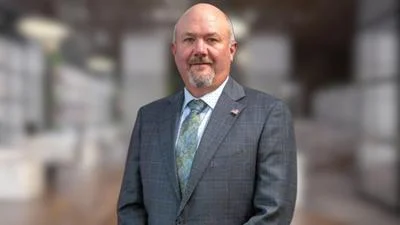The Congressional Record is a unique source of public documentation. It started in 1873, documenting nearly all the major and minor policies being discussed and debated.
“STATEMENTS ON INTRODUCED BILLS AND JOINT RESOLUTIONS” mentioning the U.S. Dept. of Transportation was published in the Senate section on pages S3218-S3219 on June 4, 2019.
The Department handles nearly all infrastructure crisscrossing the country. Downsizing the Federal Government, a project aimed at lowering taxes and boosting federal efficiency, said the Department should be privatized to save money, reduce congestion and spur innovation.
The publication is reproduced in full below:
STATEMENTS ON INTRODUCED BILLS AND JOINT RESOLUTIONS
By Ms. CANTWELL (for herself, Mr. Young, Mr. Wyden, and Mr.
Isakson):
S. 1703. A bill to amend the Internal Revenue Code of 1986 to reform the low-income housing credit, and for other purposes; to the Committee on Finance.
Ms. CANTWELL. Mr. President, I rise today to speak about the introduction of Senate legislation to help us deal with the affordable housing crisis in the United States of America.
Many of my colleagues know how pervasive this problem is. Not only is affordable housing a crisis, but the homeless population that results from not having enough housing stock in the United States of America is also a crisis and ends up costing us more money to deal with the same population.
This is not a new issue. It is not a new problem. We have been trying to fight to address this issue in the U.S. Senate and to deal with the affordable housing crisis for years, but the magnitude of the problem is getting worse. We need to respond by helping to increase supply. That is because we have so many demographic trends which we see in report after report citing and documenting what is happening in the United States of America.
We have an ever-increasing senior population that is living longer and baby boomers reaching retirement, many of whom need more affordable housing than there is in the marketplace.
We have returning veterans from our overseas missions who are coming home and who also need affordable housing.
We need workforce housing. Many parts of the United States of America have had great economic success but have not kept pace with the amount of housing stock, and, thus, the supply and pricing has resulted in astronomical challenges to provide affordable housing within a region that doesn't leave people driving hours a day just to commute to their jobs.
We have the remnants of our economic crisis during the great recession that left so many people without affordable housing and the fact that we did not keep pace with supply.
Over the last 2 years, I have worked with many organizations at the national level and participated in the announcement of many reports done by practically every institution of any significance in the United States. They all came to the same conclusion: We need to increase supply.
That is why I am introducing the Affordable Housing Tax Credit Improvement Act of 2019, along with my colleagues Senator Young of Indiana, Senator Isakson of Georgia, and Senator Wyden of Oregon, to strengthen and improve the affordable tax credit that we already have in place. My colleagues in the House--Representatives DelBene, Marchant, Beyer, and Walorski--are also introducing companion legislation today.
We did make progress in the last Congress in increasing the affordable tax credit. This tax credit helps provide resources for 90 percent of the federally-funded affordable housing that is built in the United States of America. That is because it takes the tax credit to incent people to build at this more affordable rate.
I have always said to my colleagues that I am willing to consider any other ideas that we have to increase affordable housing and will work with anybody to increase supply in the United States, and I am open to any ideas. But until we have ideas that are more successful than this, I am going to continue to push the affordable housing tax credit and push to increase the supply of the tax credit so that we can increase the supply of affordable housing.
We have a housing crisis in the State of Washington. It doesn't matter whether you are in Spokane or Walla Walla or Yakima or Vancouver. Our urban areas feel it the most and are most pinched. It causes problems for our law enforcement. It causes problems for our healthcare delivery system. It causes problems for our transportation system. The way out of this problem is to build more affordable housing.
Increasing the amount of tax credit by 50 percent over the next 10 years will give our States, our cities, and our counties more resources to build affordable housing. It will also provide stability in the value of affordable housing tax credits used in the bond finance markets and place a 4-percent floor under the credit. This gives more certainty to those who are building housing and producing it and rehabilitating that in the market.
It also maximizes the availability of the private activity bonds by recycling any multifamily bonds that are used along with housing credits to build affordable housing. Together, these steps would help us build hundreds of thousands of new units of affordable housing over the next 10 years.
In my State and other States, it would mean that we would see a 50-
percent increase in the amount of credit available over the next 10 years. That is so important because each housing project that is built takes more people out of the dire situations they are in, takes the vulnerable population and gives them the opportunity to move forward.
It also saves us dollars. The Senate Finance Committee has heard time and again from those testifying--whether it is the homebuilders or the health insurance industry--that it is more costly to deal with this population while they are homeless. That is to say, you can't deliver job training to a tent. And somebody who doesn't have proper home and a stable place to live is more likely to show up in our healthcare delivery system, costing us more money.
This legislation will also make it easier for formerly homeless students to also get help from the affordable housing tax credit under current HUD rules of the program.
It also helps those who are protected under the Violence Against Women Act can also qualify for affordable housing as they have in the past.
We know that the challenge of moving forward on affordable housing is something that is a bipartisan issue. The tax credit has had bipartisan support for many, many years in the U.S. Congress. We just need to put the pedal to the metal and provide more of the tax credit so that we can get more affordable housing built in the United States of America.
I hope my colleagues will help by signing on to this legislation, and as we discuss various proposals in the Finance Committee regarding tax policy, I hope my colleagues will help us push to our States and communities more solutions that will deal with this crisis.
______
By Mr. JONES:
S. 1708. A bill to amend the Internal Revenue Code of 1986 to establish a refundable tax credit for the installation of a storm shelter at a qualified residence; to the Committee on Finance.
Mr. JONES. Mr. President, the second bill I have introduced today would create a one-time refundable tax credit of up to $2,500 for homeowners to build or purchase a storm shelter for their home. It would ensure that people won't have to travel dangerous distances to seek shelter in the event of sudden severe weather.
Alabamians know all too well that extreme weather can strike at any time, especially now as we move from the spring tornado season into the summer hurricane season. That is why I want to use this opportunity today to urge every single one of my colleagues to support these bills and these efforts so that all of our communities can be better prepared when natural disasters strike, and they will.
In Lee County, I have been discussing with local officials these two bills, which are just a step. They are obvious steps to me. Not everybody can afford to buy a storm shelter, so the tax credit would not be available. So, working with the Lee County M.A. and officials on the ground, we are trying to learn best practices. What can we better do to harden those areas where people live in the rural communities so they will not lose their lives, much less all of their possessions? That is what we are planning to do, and the two bills today are first steps.
I sincerely hope going forward that helping fellow Americans who have suffered disasters will no longer be the partisan issue that it suddenly became this year and that we can get back to the business of taking care of our citizens and those who have sent us here to represent them.
______
By Mr. JONES (for himself, Mr. Kennedy, and Mr. Cassidy):
S. 1709. A bill to direct the Secretary of Transportation to establish a grant program to improve evacuation routes in rural communities, and for other purposes; to the Committee on Environment and Public Works.
Mr. JONES. Mr. President, while it is critical that communities get the disaster relief they need after the fact, it is also important that folks can better prepare for natural disasters and help make our communities safer so that we can reduce the impact and costs of the inevitable severe weather we will have in this country.
The 2019 hurricane season is upon us. It started just last Saturday. Folks in my neck of the woods and especially down in South Alabama know that means storms can come at any time. Fortunately with hurricanes, they can get some warning, but for tornadoes like the ones that hit Lee County, it is just minutes.
It is not a question of whether severe weather will happen; it is a question of when and where. It is also a question of whether we will be prepared when it strikes again. That is why today I am introducing two bills. The first is cosponsored by my Louisiana colleagues, Senators Kennedy and Cassidy. It would establish a new grant program through the U.S. Department of Transportation that would award up to $100 million for projects to improve emergency evacuation routes in small and rural communities.
Generally in our State and in a lot of the coastal States, there is only one or two major evacuation routes, which is just not enough to handle the situation should another hurricane hit the gulf. This grant money would help expand those routes.
The grants would be used for two purposes: to build State and local connector roads that would improve access to the broader thoroughfares and to expand existing roads and bridges so that folks can evacuate safely during extreme weather events. These infrastructure investments would also have the additional benefit of serving rural Alabama communities year-round and expanding and improving some of our aging roadways. With expanding and improving aging roadways and giving better access to rural communities, economic expansion will follow.
____________________








